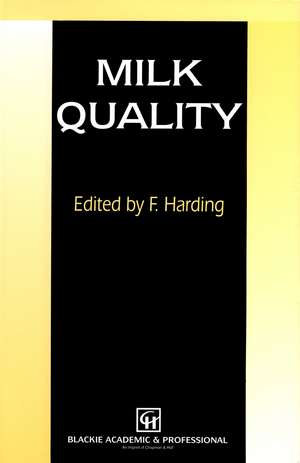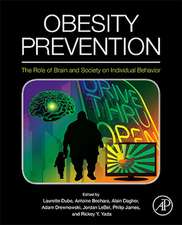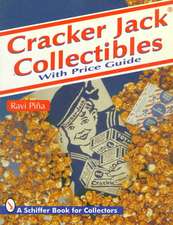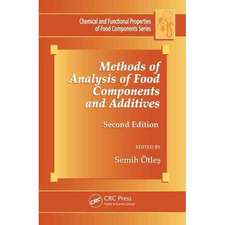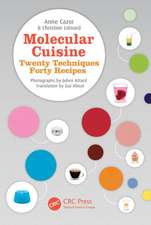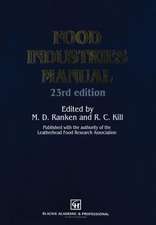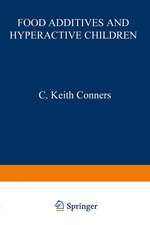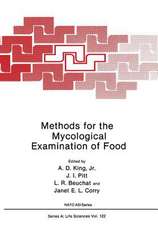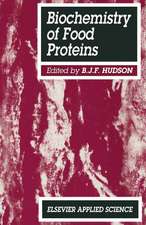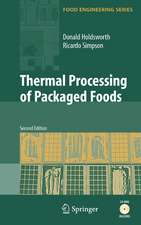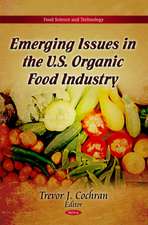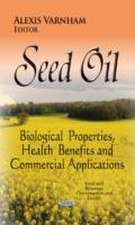Milk Quality
Autor F. Hardingen Limba Engleză Paperback – 28 oct 2012
Preț: 381.81 lei
Nou
Puncte Express: 573
Preț estimativ în valută:
73.06€ • 76.28$ • 60.47£
73.06€ • 76.28$ • 60.47£
Carte tipărită la comandă
Livrare economică 04-18 aprilie
Preluare comenzi: 021 569.72.76
Specificații
ISBN-13: 9781461359203
ISBN-10: 1461359201
Pagini: 184
Ilustrații: XIII, 166 p. 13 illus.
Dimensiuni: 155 x 235 x 10 mm
Greutate: 0.27 kg
Ediția:Softcover reprint of the original 1st ed. 1995
Editura: Springer Us
Colecția Springer
Locul publicării:New York, NY, United States
ISBN-10: 1461359201
Pagini: 184
Ilustrații: XIII, 166 p. 13 illus.
Dimensiuni: 155 x 235 x 10 mm
Greutate: 0.27 kg
Ediția:Softcover reprint of the original 1st ed. 1995
Editura: Springer Us
Colecția Springer
Locul publicării:New York, NY, United States
Public țintă
ResearchCuprins
1 World milk production.- 2 Milk production: Factors affecting milk composition.- 2.1 Introductio.- 2.2 Synthetic and secretory tissues of the mamary gland.- 2.3 The initiation and establishment of lactation.- 2.4 The milk ejection reflex.- 2.5 Effect of breed on milk composition and yield.- 2.6 Role of genetics in milk production.- 2.7 Effect of environment on milk composition and yield.- 2.8 Dairy cattle nutrition and its influence on milk yield and composition.- 2.9 The effects of milking management practices on milk quality.- 2.10 Influence of age and stage of lactation on milk component yield 22 References and further reading.- 3 Mastitis and milk quality.- 3.1 Introduction.- 3.2 Causative organisms.- 3.3 Contagious and environmental pathogens.- 3.4 Inflammation.- 3.5 Compositional changes.- 3.6 Milk losses.- 3.7 Impact on dairy products.- 3.8 Control of mastitis.- 3.9 Measurement.- 3.10 Summary 37 Further reading.- 4 Hygienic quality.- 4.1 Milk production, plant cleaning, on-farmstorage and collection of milk.- 4.2 Types of bacteria.- 4.3 Cooling and storage of milk on the farm.- 4.4 Collection, delivery and reception of milk.- 4.5 Delivery and storage prior to processing 47 4.5.1 Storage of milk prior to processing.- 4.6 Importance of hygienic quality of milk.- 4.7 Measurement of the hygienic quality of milk.- 4.8 The future.- 4.9 Sampling, storage, preservation and transportation of samples 55 4.9.1 Sample transport and preservation.- References and further reading.- 5 Adulteration of milk.- 5.1 Introduction.- 5.2 Extraneous water.- 5.3 Freezing point test for detecting adulteration.- 5.4 Sources of contamination by extraneous water.- 5.5 How to avoid getting water into milk at the farm.- 5.6 Control of extraneous water through payment schemes.- 5.7 Other sources of adulteration.- References and further reading.- 6 Compositional quality.- 6.1 Composition of milk.- 6.2 Measurement of total solids in milk.- 6.3 Measurement of the solids-not-fat (SNF) of milk.- 6.4 Major constituents.- 6.5 The use of instruments in assessing compositional quality.- 6.6 Dairy herd improvement (DHI) and quality payment laboratories.- 6.7 Quality payment systems for milk.- References and further reading.- 7 Milk from sheep and goats.- 7.1 Introduction.- 7.2 Milking practices.- 7.3 Compositional quality.- 7.4 Measuring cow’s milk in sheep’s or goat’s milk products.- 7.5 Instrumental methods of analysis.- References and further reading.- 8 The impact of raw milk quality on product quality.- 8.1 Introduction.- 8.2 Compositional quality.- 8.3 Opportunities for manipulation of compositional quality.- 8.4 The effect of raw milk hygienic quality on product quality.- 8.5 Animal health.- 8.6 Physical handling of milk.- 8.7 Taints and contaminants.- 8.8 Pasteurised milk and cream.- 8.9 UHT products.- 8.10 Cheese.- Further reading.- 9 Processed milk.- 9.1 Introduction.- 9.2 Heat treatments.- 9.3 Quality control of heat-treated milks.- 9.4 Milks of modified compositionalquality.- 9.5 Compositional quality of fluid milk products.- References and further reading.- 10 Contaminants.- 10.1 Introduction.- 10.2 Veterinary drugs.- 10.3 Keeping antibiotics out of milk.- 10.4 Hormones (BST).- 10.5 Disinfectants.- 10.6 Nitrates, nitrites and nitrosamines.- 10.7 Pesticides.- 10.8 PCBs.- 10.9 Motoxins.- 10.10 Toxic metals.- 10.11 Dioxins.- 10.12 Radionuclides in milk.- 10.13 Irradiation.- Further reading.- 11 Nutritional aspects.- 11.1 Introduction.- 11.2 Milk fat.- 11.3 Dietary cholesterol.- 11.4 Proteins.- 11.5 Milk allergy and intolerance.- 11.6 Cultured or fermented milks.- 11.7 Immune milk.- 11.8 Minerals.- 11.9 Vitamins.- Further reading.
